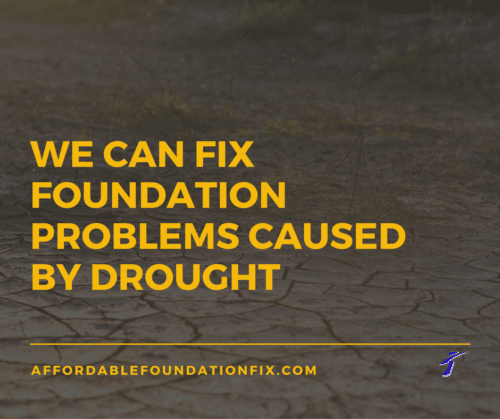 Recently, Alabama has been experiencing some severe drought conditions. Earlier this year, around November 21, NOAA (National Oceanic and Atmospheric Administration) predicted that the state would likely remain in drought throughout February of 2017. Even with the small amounts of rain parts of the state have received in the past few weeks, it is not enough to consider the state free of drought. Extensive dry periods like this can lead to various dangers – forest fires, lack of water available, poor growing conditions, etc. However, did you know that drought can also affect your foundation?
Recently, Alabama has been experiencing some severe drought conditions. Earlier this year, around November 21, NOAA (National Oceanic and Atmospheric Administration) predicted that the state would likely remain in drought throughout February of 2017. Even with the small amounts of rain parts of the state have received in the past few weeks, it is not enough to consider the state free of drought. Extensive dry periods like this can lead to various dangers – forest fires, lack of water available, poor growing conditions, etc. However, did you know that drought can also affect your foundation?
However, did you know that drought can also affect your foundation?
Dry conditions like those going on now in the state of Alabama can be the source of major foundation issues. These issues occur when the drying soil beneath your home shrinks and settles or leaves voids in the ground. The movement of soil will cause movement in your foundation, which can cause problems such as cracks or gaps, sloped floors, and issues with foundation walls. Voids due to soil shrinkage can also cause problems such as settlement and foundation cracks.
Among all of the other issues that droughts can cause for you, do not let foundation problems become a serious issue. The faster that you have issues fixed, the less likely they will be to cause serious structural damage in your home.
Solutions to Fix Drought-Related Problems in Alabama
Drought-related foundation problems can range from settlement, to foundation cracks, to leaning, bowing, or rotating walls. If you see these problems in your home, it may be time to call Affordable Foundation and Home Repair. We offer pier installation and other foundation repair options to lift, level, and stabilize your foundation. Some of our solutions that can help with drought-related foundation problems in your home include:
- Helical Piers: These devices resemble large screws that are installed beneath your foundation and screwed in to provide maximum support. Because of the way that they are installed, helical piers offer a bit of extra stability and lifting power for settling foundations, which helps correct settlement and sinking due to shifting soil and underground voids caused by drought.
- Slab Push Piers: This kind of pier works much like a helical pier but is not screwed into the ground. Because these piers do not require skin friction for support, they are relatively quick to install, require minimal amounts of set-up time, and offer reliable support for sinking slab foundations. Lifting a slab foundation that has shifted or sunk due to drought using slab piers can help stabilize the home and close foundation cracks that may have opened.
- Helical Tiebacks: If the foundation of your home has shifted due to soil drying and movement during the recent drought conditions, helical tiebacks may be the best solution. These devices are a lot like helical piers that are installed horizontally underground through the foundation walls. They are anchored in place to help pull the foundation wall back into position and ensure the home is secured.
- Plate Anchors: Another repair solution that we offer for shifted, bowing, or cracked foundation walls due to drought is plate anchor installation. Plate anchors consist of a plate attached to the interior foundation wall and a yard anchor installed in the ground adjacent to the affected foundation wall. The plate and the anchor are connected with a rod that can be tightened to pull the foundation wall back into place and close cracks while stabilizing the home above.
Contact us for solutions to drought-related foundation problems today. In the meantime, keep conserving water and checking the forecast!




